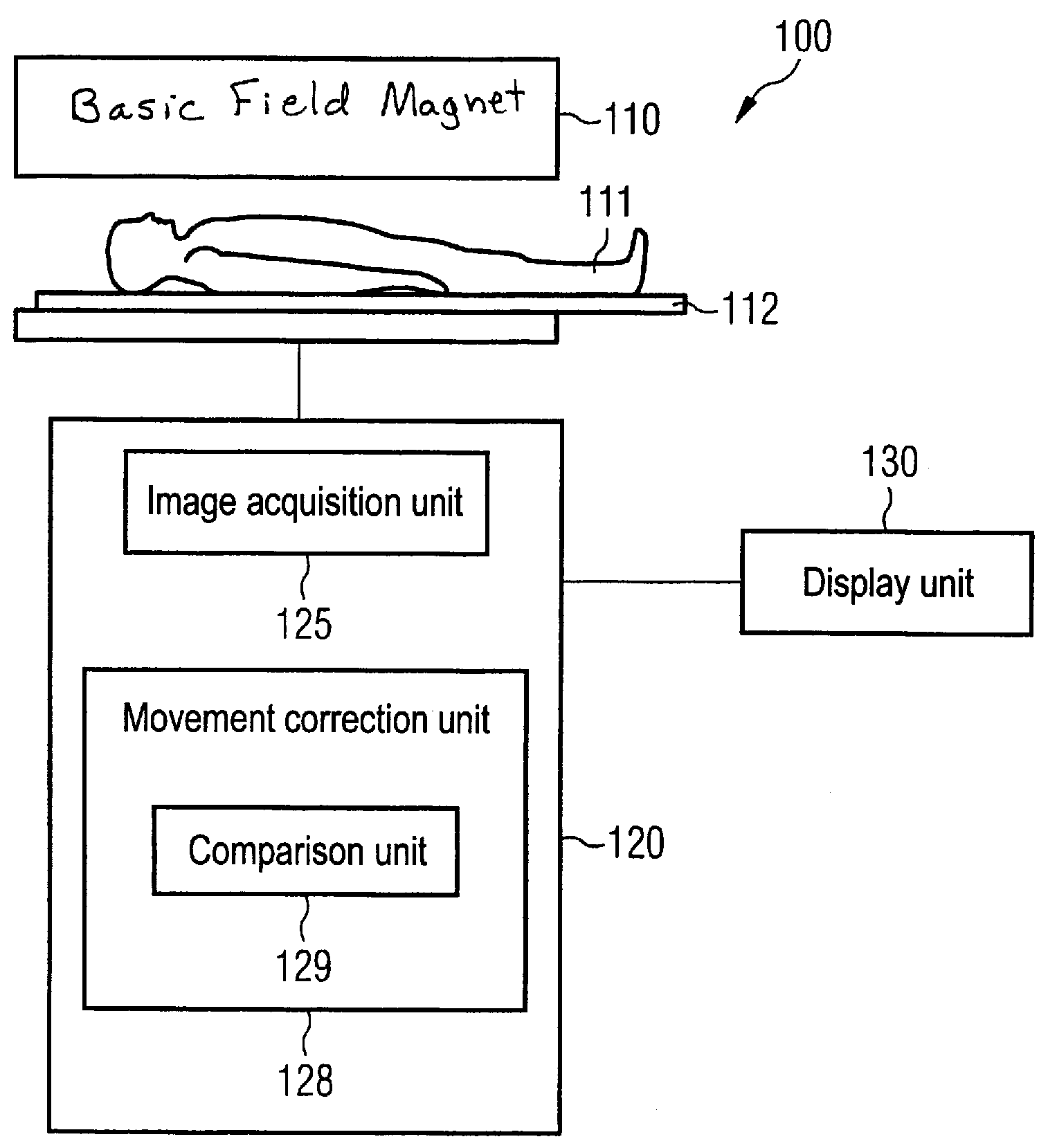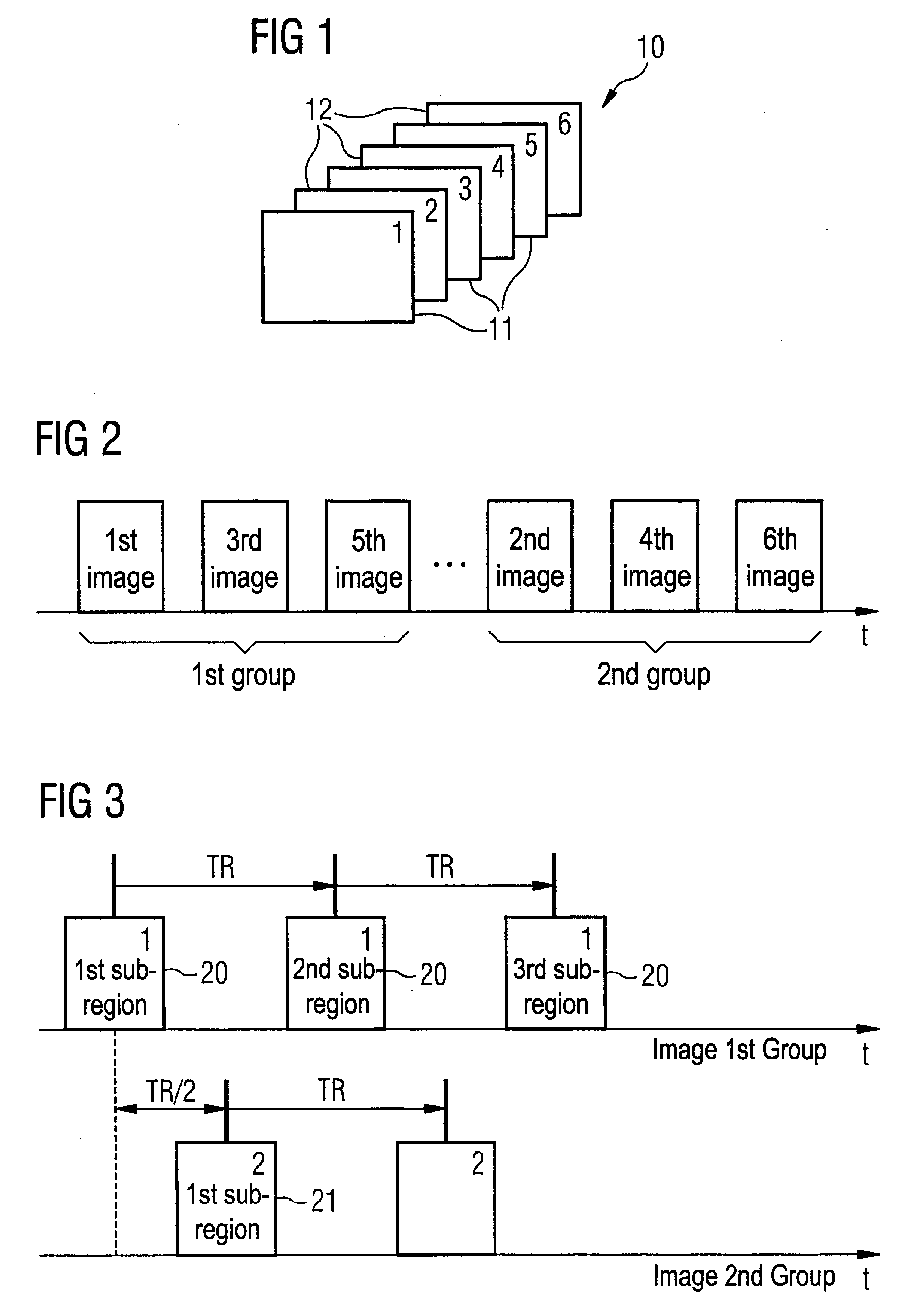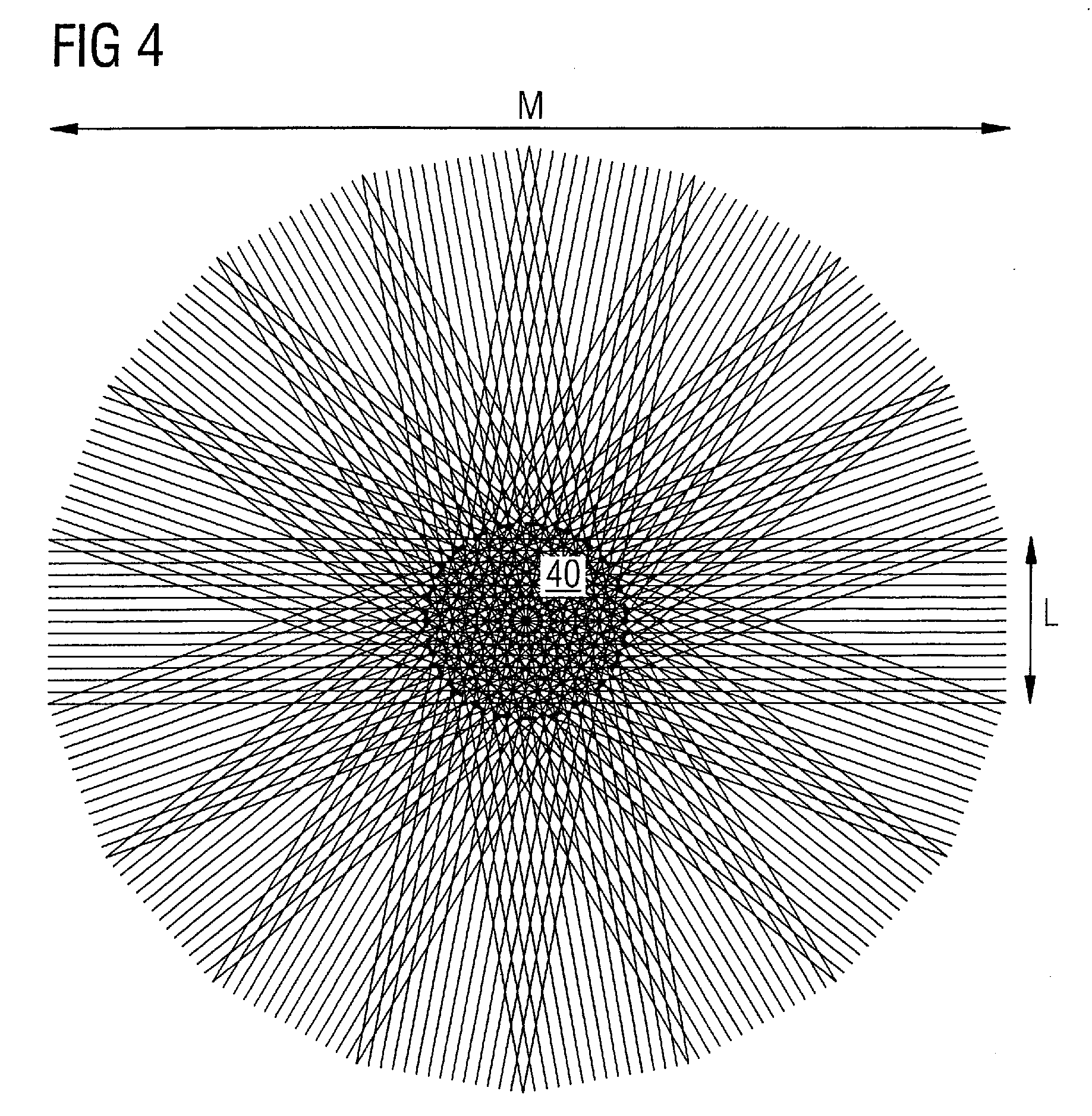Magnetic resonance system and method for correction of movement artifacts
- Summary
- Abstract
- Description
- Claims
- Application Information
AI Technical Summary
Benefits of technology
Problems solved by technology
Method used
Image
Examples
Embodiment Construction
[0027]Various MR images are schematically shown in FIG. 1. Various slices 10 are acquired from an examination region (not shown), wherein the various slices 10 present the examination region in successive anatomical order. In one embodiment of the invention, the slices 10 are not acquired in succession dependent on their spatial position, rather the slices are divided into two different groups; for example, the slices of the first group 11 and the slices of the second group 12 exist. As mentioned above, for many application cases it is advantageous not to measure directly adjacent slices in direct succession, since an excitation of nuclear spins in the adjacent slice cannot be entirely precluded given the excitation of the nuclear spins in a slice. For this reason, for example, the slices of the first group (i.e. in the shown example the slices one, three and five) are measured and the slices of the second group (the slices two, four and six in the shown example) are measured at a l...
PUM
 Login to View More
Login to View More Abstract
Description
Claims
Application Information
 Login to View More
Login to View More - R&D
- Intellectual Property
- Life Sciences
- Materials
- Tech Scout
- Unparalleled Data Quality
- Higher Quality Content
- 60% Fewer Hallucinations
Browse by: Latest US Patents, China's latest patents, Technical Efficacy Thesaurus, Application Domain, Technology Topic, Popular Technical Reports.
© 2025 PatSnap. All rights reserved.Legal|Privacy policy|Modern Slavery Act Transparency Statement|Sitemap|About US| Contact US: help@patsnap.com



